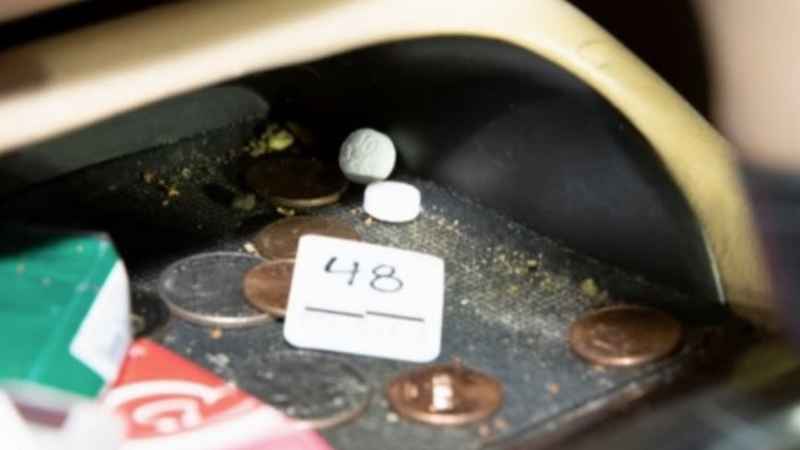Chauvin trial testimony shifts from former officer’s actions to evidence of drugs
[anvplayer video=”5020052″ station=”998122″]
The focus of the Derek Chauvin trial shifted on Wednesday, from the former officer’s actions and the use of force to physical evidence recovered at the scene.
The day began with testimony from Sgt. Jody Stiger, who returned to the stand for a second day. Chauvin’s attorney, Eric Nelson, introduced a new line of questions during his cross-examination of the LAPD sergeant.
He asked Stiger to listen to a short section of body camera video, asking, “Does it sound like [Floyd] says, ‘I ate too many drugs?’" After he listened to it twice, Stiger told Nelson he couldn’t make that out.
The state did not object.
Use-of-force expert testifies Derek Chauvin never took knee off George Floyd

This photo from the Minnesota Bureau of Criminal Apprehension shows two pills that were found inside the SUV George Floyd was in when he was taken into police custody on May 25, 2020. The photo was submitted as evidence for the trial of Derek Chauvin.[Minnesota Bureau of Criminal Apprehension]
Nelson asked Minnesota Bureau of Criminal Apprehension Special Agent James Reyerson the same question when he took the stand.
Nelson said, “Did it appear that Mr. Floyd said, ‘I ate too many drugs?’" and Reyerson replied, “Yes, it did.”
This time, however, the state challenged the question by playing a longer clip of the video for Reyerson.
Assistant Attorney General Matthew Frank asked, “Having heard it in context, are you able to hear what Mr. Floyd was saying there?” and Reyerson responded, “Yes, I believe Mr. Floyd was saying ‘I ain’t do no drugs.’"
Rachel Moran, a University of St. Thomas law professor, said this line of questioning follows the theme of the defense case.
“You heard probably Eric Nelson’s clearest attempt at getting the jury to be concerned about Mr. Floyd’s drug use,” Moran said. “The question is, will the jury believe Mr. Nelson and will the jury think it’s significant? In reality, the state’s case is an acknowledgment that yes, Mr. Floyd consumed drugs on the day of the incident but that doesn’t mean he should’ve died.”
As the state walked jurors through the BCA’s investigation, evidence was introduced showing two pills photographed in the SUV Floyd was pulled from, as well as partial pills in the squad.
Frank asked BCA forensic scientist Mckenzie Anderson why she didn’t remove the pills as evidence.
“I didn’t have any information that I was looking for anything like a pill or resembling a pill,” Anderson said.
She testified the pills from both vehicles were not physically collected until the winter, after the prosecution requested another search of the SUV and the defense requested another search of the squad.
Once the drugs were tested, Anderson said a piece from the squad was linked to Floyd.
“From item 51, I obtained a single source male DNA profile that matches George Floyd,” Anderson said.
5 EYEWITNESS NEWS asked Moran why the state directly addressed it.
“I think it’s consistent with the state’s strategy of not hiding from the struggle Mr. Floyd had,” Moran said. “They are trying very hard to present a candid credible case that doesn’t involve hiding the ball.”
During the state’s questioning, the last witness testified about her own analysis of the drugs.
Susan Neith is a forensic chemist with NMS labs, based in Pennsylvania. She testified that the BCA sent her the two pills from the SUV, as well as a partial pill from the squad.
Neith described finding less than 1% fentanyl in each sample after testing them, which she testified is standard for street drugs.
She also testified the pills contained 1.9-2.9% methamphetamine, which is much lower than typical street drugs.
“Majority of the time I see 90-100% methamphetamine,” Neith said.
Moran said this could be damaging to the defense case.
“It’s potentially significant,” she said. “The defense wants to say that the drugs caused Mr. Floyd’s death and Derek Chauvin did not, so this testimony that the drugs were not as strong as you might find in a typical street drug hurts the defense. It suggests this was potentially not anywhere close to a lethal amount.”